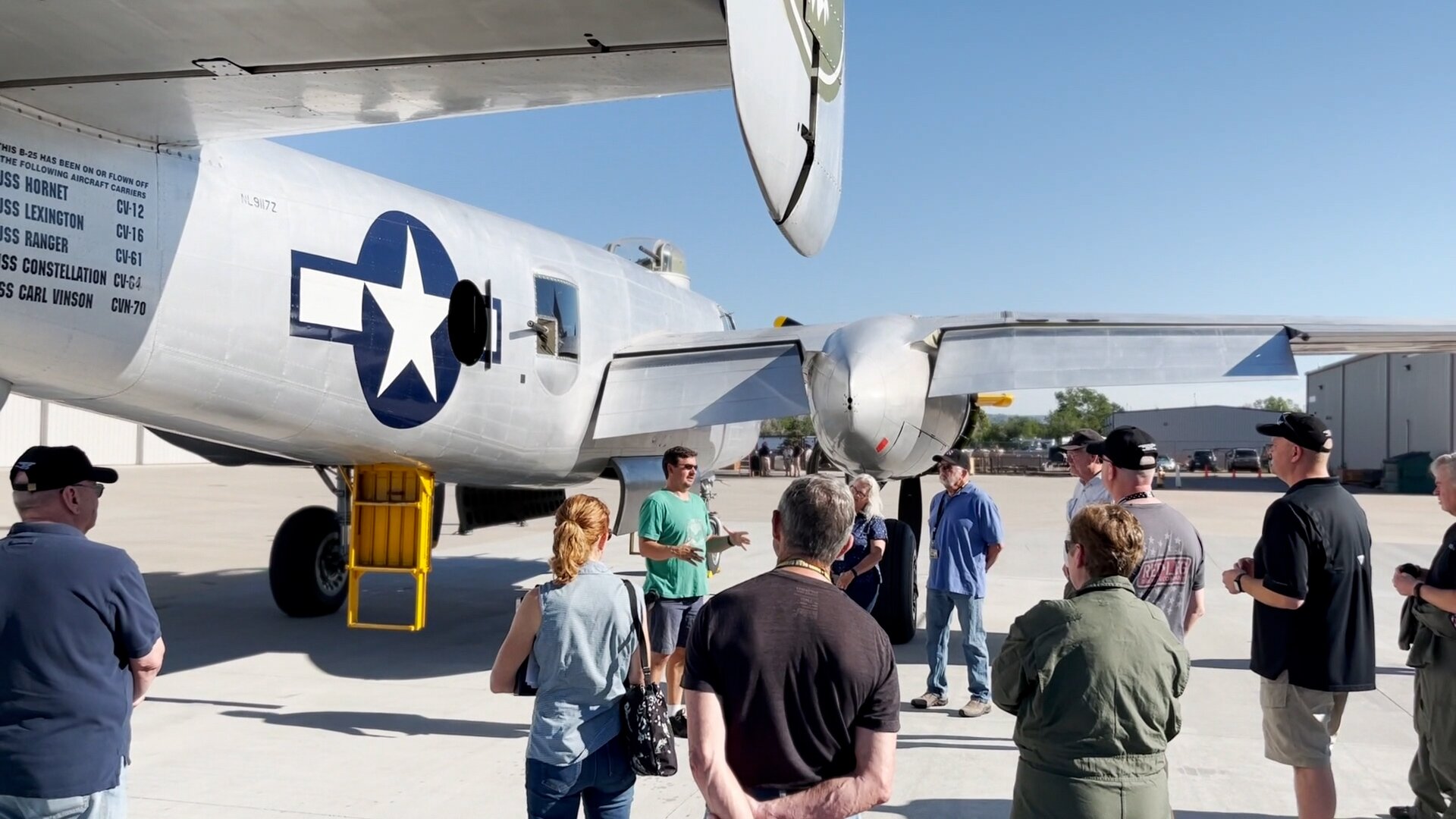Volunteers take flight in restored World War II aircraft

COLORADO SPRINGS, Colo. — Volunteers at the National Museum of World War II Aviation in Colorado Springs were treated to a special opportunity last weekend: the chance to take flight in restored World War II aircraft.
Museum President and CEO Bill Klaers piloted B-25 flights over landmarks including Garden of the Gods and downtown Colorado Springs as part of the museum’s annual Volunteer Appreciation Day.
Klaers emphasized that operations hinge on volunteer efforts. “Volunteers do everything at the Museum. Everything you see was built by volunteers,” he said. “They keep this place going. It’s a huge community effort.”
“We owe so much to these memories, and to keep the history and lessons learned alive,” Henry said. “That is core to the mission of this museum.”
Next door, Westpac Restorations, a privately held company co-owned by Museum founder Klaers, is one of the top World War II aircraft restoration companies in the United States, Henry said. Tours of the Museum include a behind the scenes look of the restoration facility.
Klaers said the Museum was awarded a Top Destination acknowledgment from Trip Advisor in July signifying it has received among the top 1% of reviews left for an attraction. “It’s bringing people and tourism here,” Klaers said of the facility.
This year’s Pikes Peak Regional Air Show will commemorate the 10th Anniversary of the National Museum of WWII Aviation while benefitting the Museum, Peterson Air and Space Museum, and the Ft. Carson 4th Infantry Division Museum. The air show will be held at the Colorado Springs Airport on September 24 and 25.

Kate Perdoni is a multimedia journalist with Rocky Mountain PBS and can be reached at kateperdoni@rmpbs.org
The Museum has over 200 volunteers — and over 100,000 feet of hanger and display space, said John Henry, Lead for Communications and Public Relations for the Museum. “The volunteers here really do everything,” Henry said, “from building exhibits, to researching, to archiving, to giving tours, to running the Museum’s gift shop.”

Steven Holt, a volunteer for two years, works in the museum’s Interactive Exhibits department including with flight simulation.
“It was an outstanding experience,” said Holt, who was on the B-25’s first flight of the morning. “Getting to go up into a piece of history — there is really nothing like it. I’ll be smiling all day.”
Many of the museum’s volunteers have personal and familial connections to World War II, Henry noted. His own father flew a B-25 in World War II. “The B-25 Mitchell Bombers were central to many missions in World War II,” Henry said. “They were used in low-level attack in the Pacific theater of operations in the war against Japan.”


